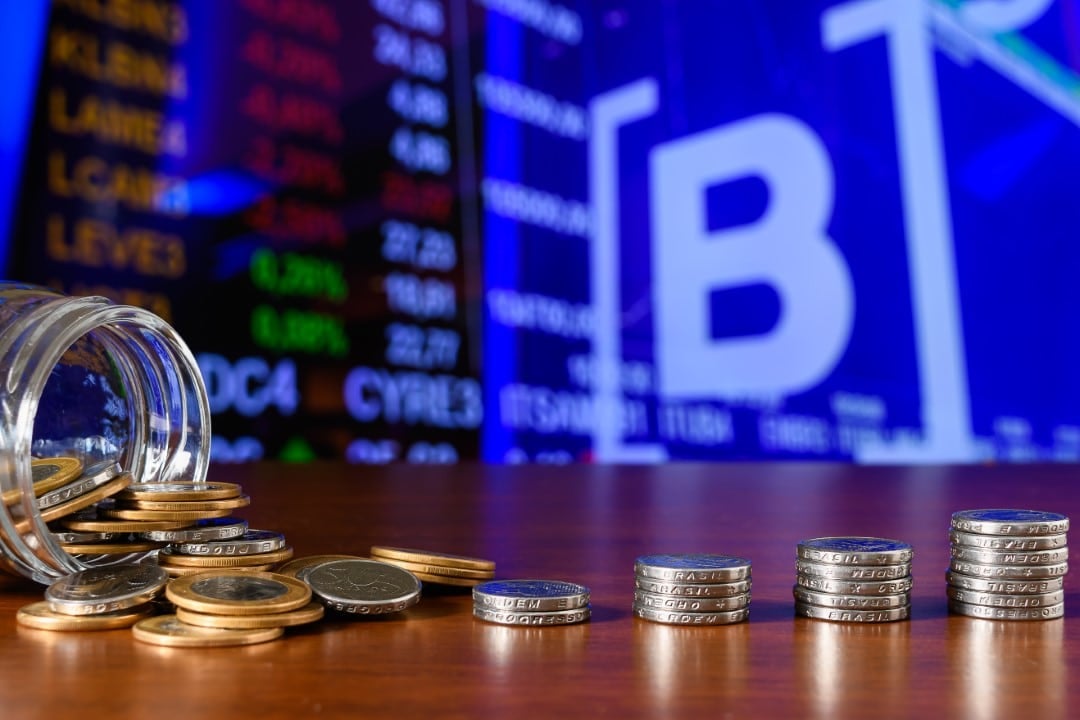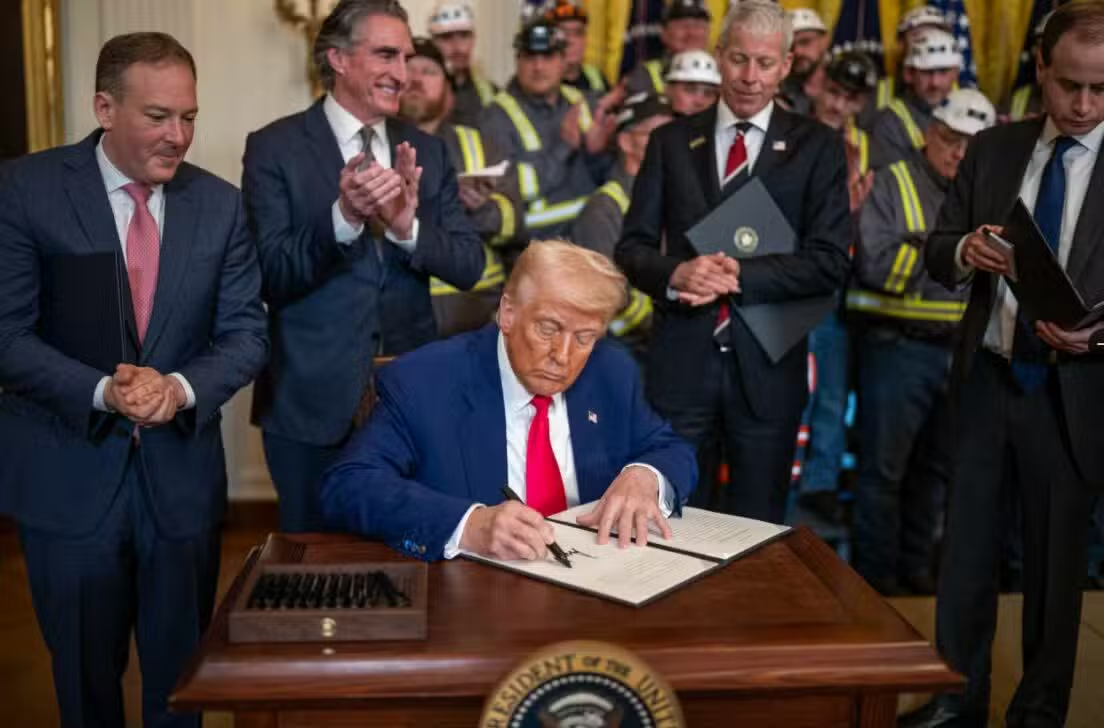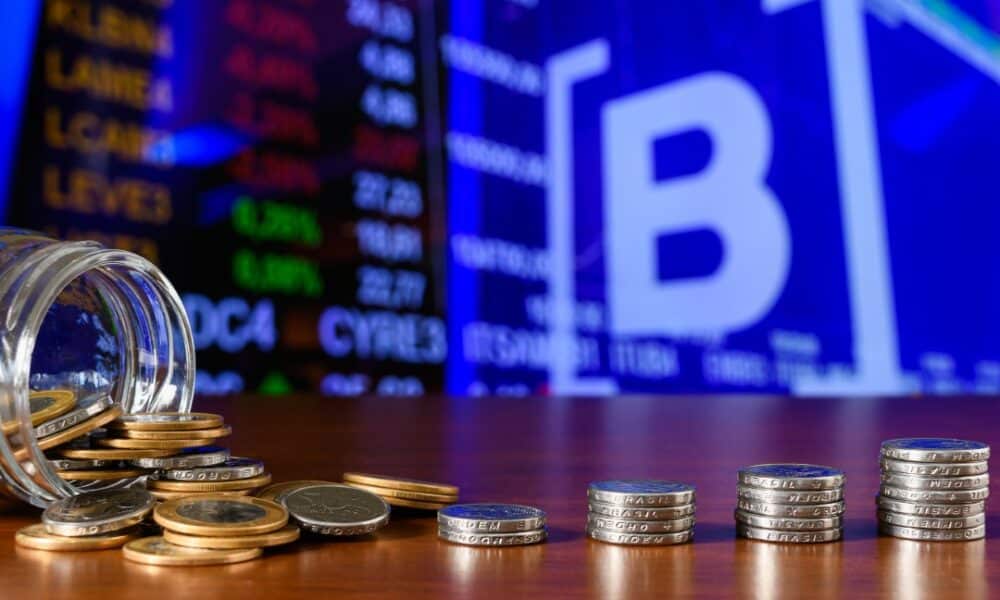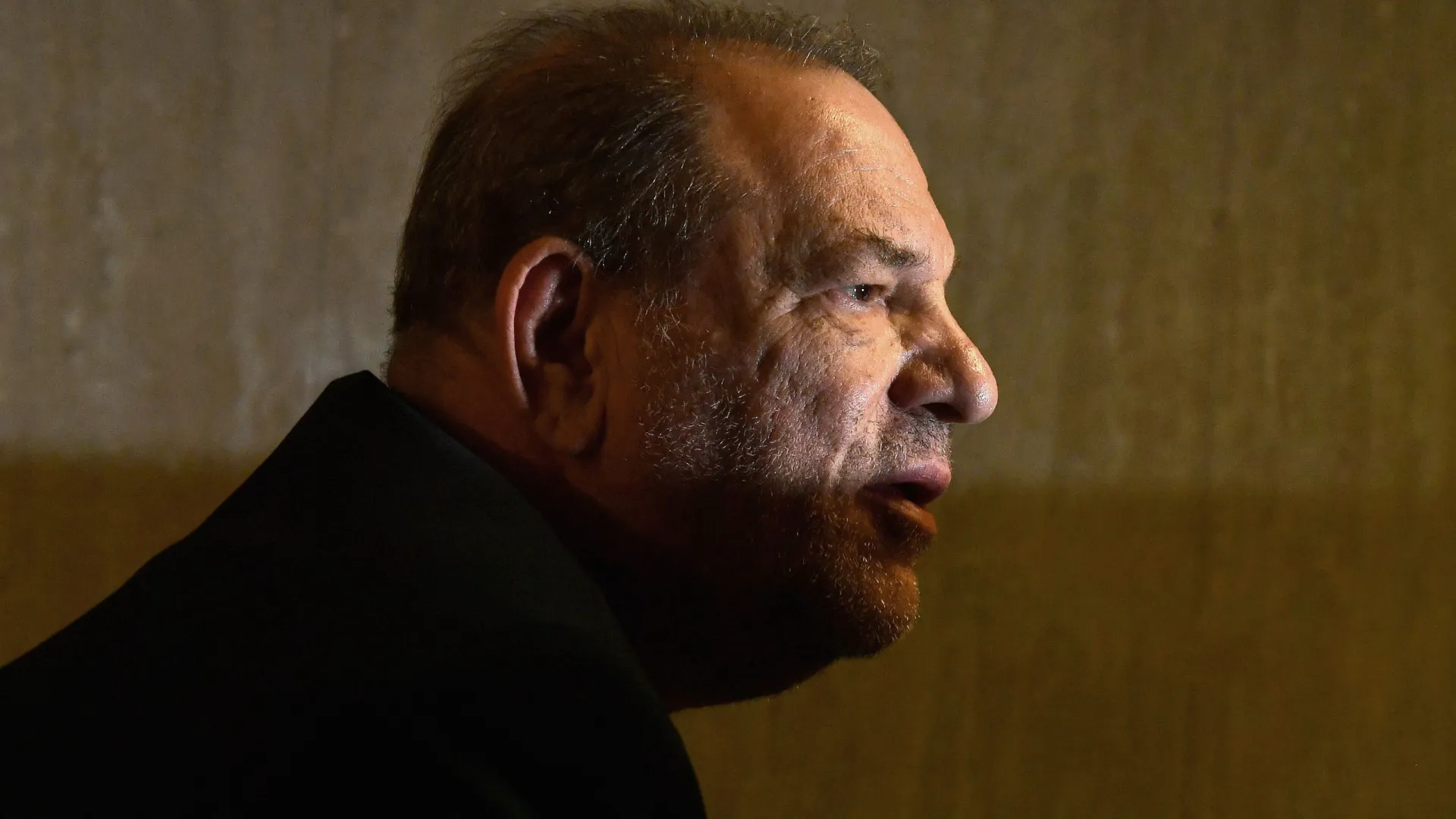
The Brazilian financial market experienced a day of sharp movements on April 9, 2025, as the commercial dollar fell 2.24%, closing at R$ 5.862 on the sell side, while the Bovespa index surged 3.33%, reaching 128,061.84 points. This shift was triggered by an unexpected 90-day truce in the trade tensions led by U.S. President Donald Trump, who had been pushing a “tariff surge” that pressured emerging currencies. Throughout the trading session, the dollar hit a high of R$ 6.096 before dropping to a low of R$ 5.843, erasing early gains and catching analysts off guard. Meanwhile, the Brazilian stock exchange, fueled by gains in export-driven companies like Vale and Petrobras, capitalized on the exchange rate relief and optimism over U.S.-China trade talks. This dynamic offered a brief respite to investors after weeks of volatility sparked by global trade disputes.
The dollar’s decline gained momentum following Trump’s announcement, which paused tariffs of up to 25% on imported goods set to take effect earlier in the month. Just a day prior, the Brazilian real ranked as the third most devalued currency against the dollar among emerging markets, with a cumulative drop of 5.1% since the tariff threats began. The currency’s retreat on April 9 eased pressure on imported goods prices in Brazil, while the Bovespa’s rise reflected renewed confidence in the domestic market. Stocks of Vale, a leading iron ore exporter, jumped over 4%, riding the wave of commodity price increases amid a weaker dollar.
This turnaround comes as Brazil’s Central Bank closely tracks exchange rate fluctuations but refrained from direct intervention in the spot market during today’s session. In 2024, the bank conducted 12 extraordinary dollar auctions, injecting over US$ 50 billion to curb the currency’s climb, which peaked at R$ 6.26 in December. The tariff truce, paired with positive economic indicators like a 0.8% GDP growth in Brazil’s fourth quarter of 2024, bolstered both the stock market and the real, though experts caution that volatility could return if international negotiations falter in the coming months.
Key drivers of the dollar’s decline
The 2.24% drop in the dollar on April 9 stemmed primarily from Trump’s declaration of a 90-day suspension of import tariffs, originally slated to start on April 2. These tariffs, ranging from 10% to 50% across goods from over 180 countries, had driven the dollar to record highs, such as R$ 6.30 the previous week. The decision followed intense lobbying from U.S. business leaders and retaliatory threats from China and the European Union, both of which backed off their own countermeasures after the truce was confirmed.
China, Brazil’s top trading partner, had initially imposed 84% tariffs on U.S. goods, while the EU countered with 20% duties. This standoff had bolstered the dollar as a safe-haven asset, but the truce shifted market sentiment. Brazil, which exported US$ 90 billion in commodities like soybeans and iron ore in 2024 (28% of its total exports), saw the real strengthen as fears of disrupted trade eased. The exchange rate slid from R$ 6.063 at 11:23 a.m. to R$ 5.862 by day’s end, mirroring the swift response from investors.
Global currency trends also played a role. The Mexican peso rose 2.76%, while the euro dropped 2.12% against the dollar, signaling a reallocation of international flows. Brazil’s exports to the U.S., valued at US$ 40.3 billion in 2024, faced less risk of losing ground, further supporting the real’s recovery and the dollar’s decline in the local market.

Why Bovespa soared to 128,000 points
The Bovespa index responded with a robust 3.33% gain, closing at 128,061.84 points, its highest level since January 2025. The rally was led by export-heavy firms and banks, which capitalized on the favorable exchange rate and optimism from the tariff truce. Vale, a major iron ore exporter, saw its shares climb 4.2%, buoyed by a 2% rise in iron ore prices to US$ 130 per ton on international markets.
Petrobras also fueled the surge, with preferred shares up 3.8%, driven by expectations of higher export revenues from oil, which brought in US$ 20 billion from China alone in 2024. Banks like Itaú and Bradesco gained 2.5% and 2.7%, respectively, as the reduced exchange rate risk bolstered their portfolios. In 2024, the financial sector accounted for 35% of the Bovespa’s composition, and the day’s gains underscored renewed investor trust after recent declines.
- Vale: Up 4.2% with rising iron ore prices.
- Petrobras: Gained 3.8% with stronger export outlook.
- Banks: Itaú and Bradesco rose up to 2.7% on lower currency risk.
The index, which had fallen 2.96% the previous week to 127,256 points, regained momentum with the global relief, though analysts warn that uncertainty could resurface if trade talks falter.
Global backdrop and Brazil’s market response
International events shaped Brazil’s market dynamics on April 9. Trump’s 90-day tariff truce, prompted by pressure from Wall Street and allies like Canada and Mexico, halted duties affecting US$ 500 billion in global imports. Asian markets dropped as much as 3% early in the day but later recovered partially, while Wall Street saw the Nasdaq rise 0.5% and the Dow Jones climb 1.2%. The dollar, previously sought as a safe haven, weakened worldwide, lifting currencies like the real.
In Brazil, the dollar’s fall eased import costs, which totaled US$ 40.6 billion from the U.S. in 2024, including industrial inputs and fuels. The IPCA inflation rate hit 4.5% in March 2025, and the cheaper dollar could temper price pressures in the short term. Export firms, generating R$ 170 billion in 2024 revenue, also benefited, as a lower dollar made Brazilian goods more competitive in non-Chinese markets.
The tariff pause lifted bitcoin as well, which rose 3.97% to R$ 481,883.00, reflecting heightened risk appetite. Brazil traded R$ 15 billion in cryptocurrencies in 2024, and bitcoin’s surge aligned with the Bovespa’s gains, signaling a broadly optimistic trading day.
How the tariff truce reshaped exchange rates
Trump’s 90-day truce reversed the dollar’s upward trend, which had weighed on the real since early April. The currency peaked at R$ 6.096 in the morning but dipped to R$ 5.843, settling at R$ 5.862—a 2.24% drop, the steepest since a 2.29% decline in December 2024 after Central Bank auctions. In 2024, the real lost 10% against the dollar, but today’s shift offered temporary relief.
The market responded to China and the EU pausing their 84% and 20% retaliatory tariffs, respectively, after Trump’s announcement. This reduced the dollar’s safe-haven appeal, boosting the real and other emerging currencies. Brazil’s soybean exports to China, worth US$ 20 billion in 2023, could remain steady with the truce, avoiding losses to U.S. competitors.
Exchange rate volatility remains a concern. The dollar fluctuated between R$ 5.62 and R$ 6.26 in 2024, and analysts suggest the R$ 5.86 level may not hold if global talks collapse. Brazil’s Central Bank, which injected US$ 3 billion in auctions last week, stayed on the sidelines today but stands ready to act if the dollar rebounds.
Stocks fueling Bovespa’s surge
The Bovespa’s 3.33% climb was driven by key stocks. Vale, with a 15% weight in the index, rose 4.2%, reflecting iron ore gains and a weaker dollar enhancing real-based revenues. Petrobras, holding 12% of the index, advanced 3.8%, supported by oil at US$ 70 per barrel and competitive exports after shipping 500,000 barrels daily in 2024.
Banks like Itaú (up 2.5%) and Bradesco (up 2.7%) bolstered the rally, benefiting from lower currency risk impacting their credit portfolios. The financial sector earned R$ 120 billion in 2023, and today’s gains highlight its stability. Suzano, in the pulp sector, rose 3.5%, leveraging the dollar drop for exports worth R$ 10 billion in 2024.
Effects on Brazilian consumers
The dollar’s fall to R$ 5.862 offers immediate relief to consumers. In 2024, imported goods like electronics and fuels accounted for 20% of domestic consumption, with prices rising 15% in the last quarter due to a high dollar. A cheaper currency could cut smartphone prices, averaging R$ 3,000, by up to 5%, and gasoline, at R$ 6.50 per liter, by R$ 0.20 soon.
Inflation could also ease. The IPCA reached 4.5% over 12 months in March 2025, and the tariff truce may keep it below the 4.75% target ceiling. Imported wheat, up 10% in 2023 due to the dollar, affects staples like bread and pasta, consuming 8% of household budgets, and today’s drop could stabilize these costs.
Global markets’ reaction to a weaker dollar
The dollar’s decline on April 9 rippled worldwide. European markets like the FTSE 100 rose 2%, and Japan’s Nikkei gained 1.5% after early losses. In the U.S., the Dow Jones climbed 1.2%, with investors betting on lower domestic inflation. The U.S. imported US$ 2 trillion in goods in 2024, and the truce could cut costs by 5%, per estimates.
Emerging currencies strengthened, with the Mexican peso up 2.76% and South Africa’s rand up 2%. The euro fell 2.12% to R$ 6.431, reflecting reduced dollar demand. Bitcoin, at R$ 481,883.00, rose 3.97%, tracking the risk-on sentiment that lifted Bovespa and other assets.
Short-term outlook for currency and stocks
Analysts view the dollar’s drop and Bovespa’s rise as a temporary breather. In 2024, the dollar swung 15% against the real, and the 90-day truce could hold it between R$ 5.80 and R$ 6.00 through July if talks progress. Bovespa, down 5% in March, might hit 130,000 points with sustained optimism, but a tariff resumption could push it back to 125,000.
Brazil’s GDP grew 2.8% in 2023, and the truce could support this pace by averting inflation shocks. Still, global uncertainty keeps investors wary, and the Central Bank, which spent US$ 60 billion in reserves in 2024 (ending at US$ 340 billion), signaled readiness for further auctions if the dollar climbs again.
Timeline of market-moving events
Recent events shaped the dollar and Bovespa’s performance:
- April 2: Trump announces 10%-50% tariffs on imports.
- April 7: China and EU retaliate with 84% and 20% tariffs.
- April 9: Trump suspends tariffs for 90 days; dollar falls 2.24%, Bovespa rises 3.33%.
- July 2025: Tariff truce set to expire.
This timeline underscores the market’s sensitivity to global policy shifts and their immediate impact on Brazil.






